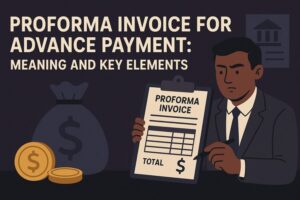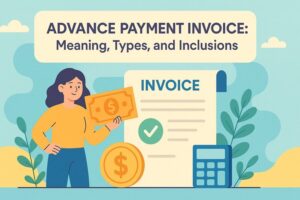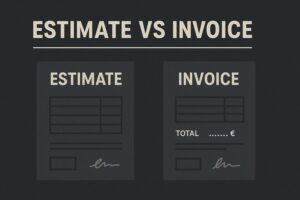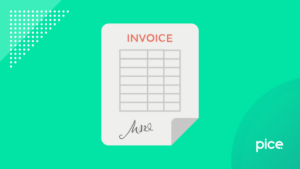Key Difference Between Bill of Lading and Invoice Explained
- 5 Nov 25
- 7 mins

Key Difference Between Bill of Lading and Invoice Explained
Key Takeaways
- A Bill of Lading (BOL) serves as a shipment receipt and contract between the carrier and shipper, while an Invoice is a financial document requesting payment for goods or services.
- The BOL is issued when goods are handed over to the carrier, whereas the Invoice is typically issued after delivery or service completion.
- The Bill of Lading is issued by the carrier or their agent, while the Invoice is issued by the seller or service provider.
- The BOL acts as proof of ownership and transfer of goods in transit, while the Invoice supports accounting, taxation, and payment tracking.
- Both documents are mandatory in international trade under CBIC guidelines, ensuring legal clarity, record accuracy, and smooth logistics operations.
Have you been shipping goods without clearly knowing the difference between a bill of lading and an invoice? These documents serve different purposes and mixing them up can lead to costly errors.
For instance, ABC Pvt. Ltd. places an order for 100 chairs from XYZ Furniture Co. at ₹1,000 each. To request payment, XYZ issues an invoice of ₹1,00,000. On the other hand, when the chairs are dispatched, the transporter issues a bill of lading, confirming shipment details.
Knowing the difference between the two helps ensure smooth transactions and avoids confusion in your logistics process.
An Overview of the Difference Between Bill of Lading and Invoice
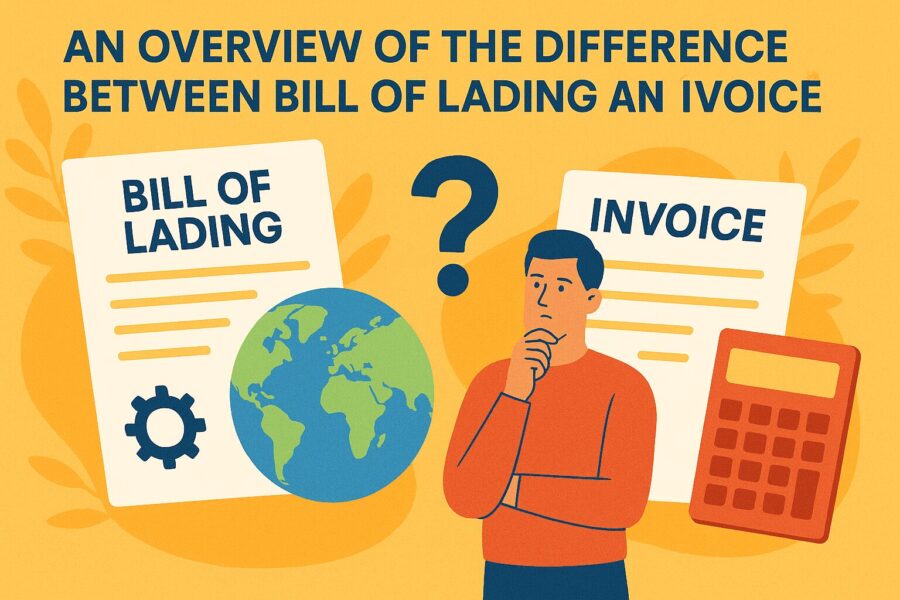
| Aspect | Bill of Lading | Invoice |
| Time of Issuance | Issued at the time a carrier receives the goods for shipment | Issued post-delivery of goods/services completion (or in anticipation of the same) |
| Purpose | Acts as the receipt for the goods’ shipment | Acts as a formal request for payment addressed to the buyer |
| Serves as a contract between the carrier and the shipper | Lists the sale transaction | |
| Acts as a document that prompts the transfer of goods’ ownership in transit | Extends legal documentation/accounting-related sale records | |
| Issued by | Carrier/their representative | Seller/service provider |
| Received by | Shipper signs as well as receives the BOL copy when the freight is accepted by the carrier initially | Buyer/client (responsible for the payment) receives the invoice |
| The receiver signs as well as receives a BOL copy when the goods have been delivered | ||
| Content | Shipper and consignee names and addresses | Seller and buyer related information |
| Tax information | ||
| Invoice number | ||
| Goods’ description | ||
| Date | ||
| Goods’ quantity | ||
| Products/services descriptions | ||
| Type of packaging | Quantities | |
| Rates | ||
| Dates for pickup and delivery | ||
| Total amount pending | ||
| Carrier’s signature | ||
| Payment terms & conditions |
Key Difference Between a Bill of Lading and an Invoice in Detail
An invoice and a bill of lading are crucial in the context of international shipping and trade. In fact, the CBIC has made the issuance of both documents mandatory to continue with the import or export-related transactions.
The differences between a bill of lading and an invoice are explained in detail below:
1. Meaning
A bill of lading is a shipping document that is issued by a carrier to a shipper. It is a legal document that lists the quantity, type and destination of the goods to where they are being carried. The document serves as a:
- Receipt of freight services
- Contract between the carrier and shipper
- A document of title, which may be referred to for the transfer of the goods’ ownership
On the other hand, the invoice is an elaborate bill. It is sent over by a product/service provider to the buyer. The shipping document lists the amounts as well as the costs of the products/services opted for. It is a formal request for payment and also documents the transaction associated with the sale made.
2. Why is it Necessary?
A bill of lading is necessary when products are transported by the party responsible via:
- Sea
- Land
- Air; from one place to another, involving separate parties.
The bill of lading is crucial in the case of international trade. These goods (being traded) go through several carriers/borders. Therefore, the BOL needs to be presented at the various checkpoints as the shipment’s journey finally ends with the delivery.
The invoice, on the other hand, is necessary after the post-delivery of goods or after the completion of services. It may also be issued prior to or in anticipation of a service/delivery. It records the sale for the accounting process to be carried out seamlessly, for both the seller and the buyer. In the context of business-to-business transactions, the invoices are fundamental.
3. Purpose
The bill of lading in international trade serves 3 of these distinct purposes:
- It serves as proof of the contract between the carrier and the shipper for the transport.
- This falls under essential documents, acting as a carrier-issued receipt once they have the goods in hand, taking over the charge.
- It names the person who is in possession of the BOL, entitled to the products present at the transit.
An invoice’s key functions include:
- Formally requesting payment from the buyer to the seller, from the buyer for specific goods/services opted for.
- It acts as a legal document which can be cited as evidence for the transaction. This shall help meet accounting/tax purposes.
- Any parties involved use the invoices for record-keeping, allowing for tracking purposes to do with inventory and managing of finances.
- The invoices list the required information for both buyers and sellers, for the reporting of income/expenses, and to file taxes efficiently.
4. Who Issues/Receives the Documents?
The bill of lading is issued by the carrier to the shipper/their agent. This step indicates that the cargo is loaded. After the goods have been successfully delivered, the receiver shall also sign the BOL.
The invoice is issued by the seller/service provider post-delivery of the goods or after the completion of the services. It may be a:
- Company
- Freelancer, or any other type of vendor
The invoice recipient accepts the goods/services. This makes them responsible for making the payment of the amount quoted. This entity is typically a:
- Business
- A consumer who has made a purchase from the issuer
5. What Features on the Documents?
The BOL features these details:
- Names and addresses of the consignee as well as the shipper
- Particular instructions (if any) for the carrier
- Pick-up date
- Expected delivery dates
- Goods’ description (it shall include the weight, quantity and dimensions)
- Packaging type (mention whether they are boxes, pallets or containers)
- Route to be taken and the transit points (if any)
- Carrier's representative's signature; it shall confirm the receipt of the goods
- Carriage-related payment terms and conditions
While writing up the invoice, here are the key elements to be included:
- Seller’s and buyer’s names as well as addresses
- Invoice date
- Invoice number (simplifying the tracking process)
- Description of the services/products extended
- Price per item/service
- Quantity of items purchased
- Total amount owed
- Scope of services rendered
- Tax-related details
- Seller’s signature/digital authentication
- Payment-related conditions (this may include the delayed payment penalties, due date, and accepted payment modes)
💡For timely bill payments and tracking business transactions, use the PICE App.
Conclusion
To conclude, having an idea about the difference between a bill of lading and an invoice is crucial for precise financial transactions and smooth logistics. By recognising the distinction between the 2, businesses can bypass errors while ensuring the maintenance of accurate records and timely payments.









